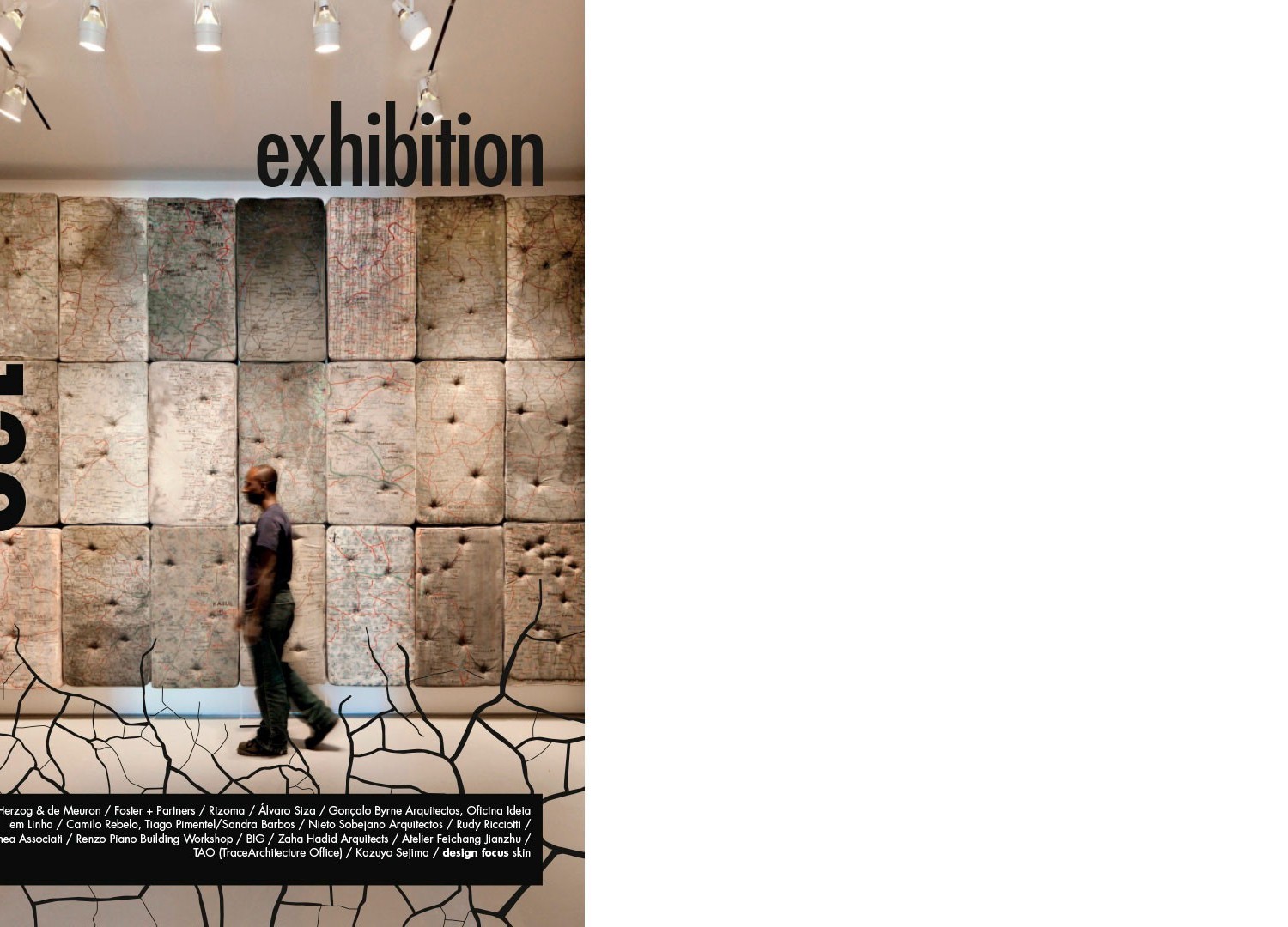
International magazine of architecture and project design january/february 2014
To display, exhibit and transmit information in the Internet Age
The web, digital information, the sometimes all too intrusive presence of social networks and today’s Editoria systems in general have changed radically over the last twenty years; this calls for an attentive reflection on the use of traditional means of conveying knowledge as for instance books, magazines, shows and exhibitions. There are those who, prey to nostalgia, complain about it as they consider new technologies a sign of the barbarization and superficiality of contemporary Editoria, which condenses thoughts and suggestions that would deserve a lot more space into 140 characters. Many others applaud, welcoming a hypothetical democratization of information, forgetting that the errors and lack of verification of the truthfulness of the content may prove very harmful, even dangerous, in a mediadominated society. In our opinion these changes, like all others, must be fully understood in order to make the most of the potentials, even if it is clear that not all the implications must be welcomed with interest only by virtue of their innovative character, also because there are often many slain left on the field: venerable old publications that unfortunately disappear, newspapers which see their role and capacity of action curtailed, exhibitions lacking in real contents because they are wholly centred on virtual features. Sometimes many issues become complicated, because we fail to understand and analyse their meaning with objectivity; and it happens even more frequently that the means are confused with the ends. It is by no means unusual to come across editors who consider that the purpose of their activity to be publishing books or printing magazines and that the product represents the means, a mere instrument; the end should, on the contrary, consist of conveying contents and ideas. Analogously, many cultural institutions consider their activity to culminate in the cathartic moment of the exhibition, while this is really not the case, even if habit sometimes leads us to make this kind of valuations. Now, if we are regaining some degree of healthy equilibrium after frenzied years of radical transformations, we can only ascertain that a publication is, by nature, a centre of research which analyses and proposes contents in relation to a certain subject and that a magazine (on paper) is merely one of many possible means of conveying the knowledge acquired, while technology offers others which require codes and languages adapted to the new conditions of sharing knowledge: the web, apps, transmission via streaming, etc. The same reflection must be made with regard to every exhibition initiative whose purpose coincides not so much with the exhibition or the hypothesis of more or less fascinating exhibition designs which represents the means that have traditionally been used for the transferral of information as with the information itself and the need of the different institutions and organizations to diffuse it in the world, transforming the knowledge from a phenomenon reserved for an elite (the chosen few who have the opportunity to visit it) to generalized contributions available for everyone. This ethical purpose has implications on the techniques and technologies which should be utilized for the diffusion of the contents of every exhibition, supplementing the opportunities to acquire real knowledge with the possibilities offered by the display and virtual transmission of the contents. It is therefore clear that the disciplinary accessories of a field of expertise which was once taught in universities with the name, at least in Italy, of exhibition and museum design sees its field of activity change, with the introduction of hitherto unknown spaces and visions. Does all this change also the spatial and architectural dimension of those places? Not always! In fact, it is not so much a question of hardware as of software, even if the architect naturally cannot remain indifferent to the changes.
Marco Casamonti
Download cover
Download introduction of Marco Casamonti
Download Exhibiting architecture today: complexity and hybridizing from Le Corbusier to Louis Kahn
Download “New Tornabuoni Arte Gallery – Archea Associati”


